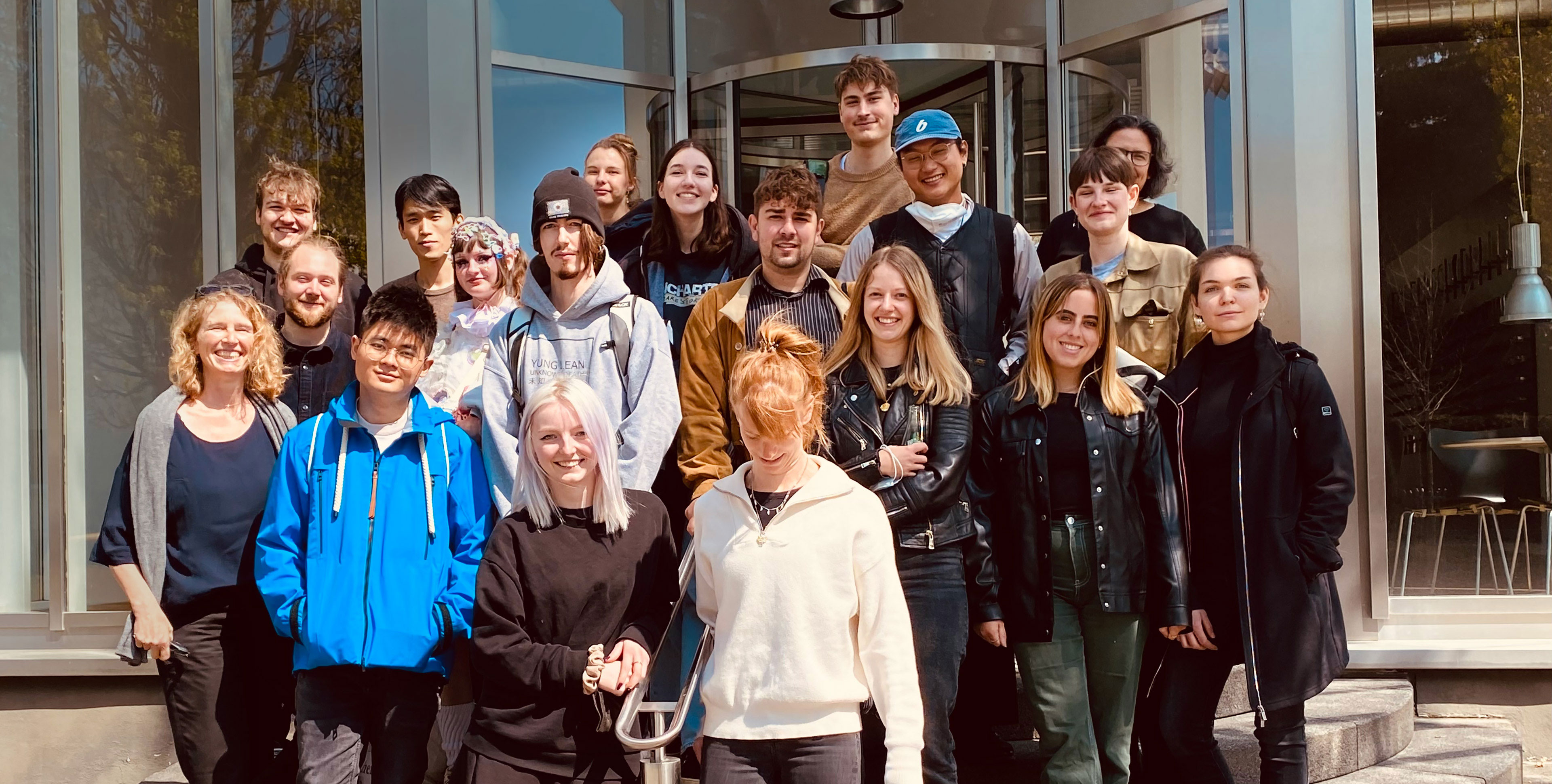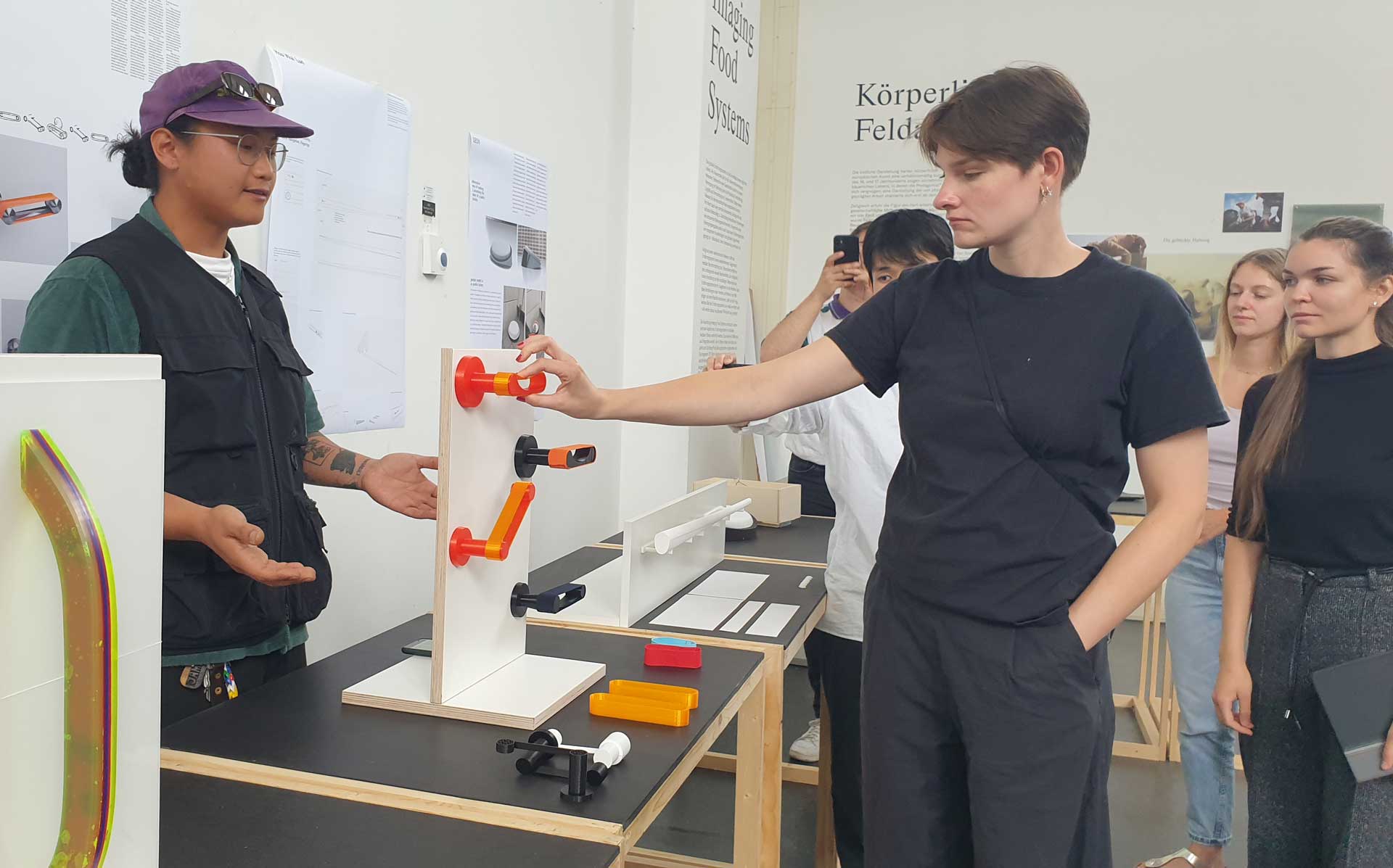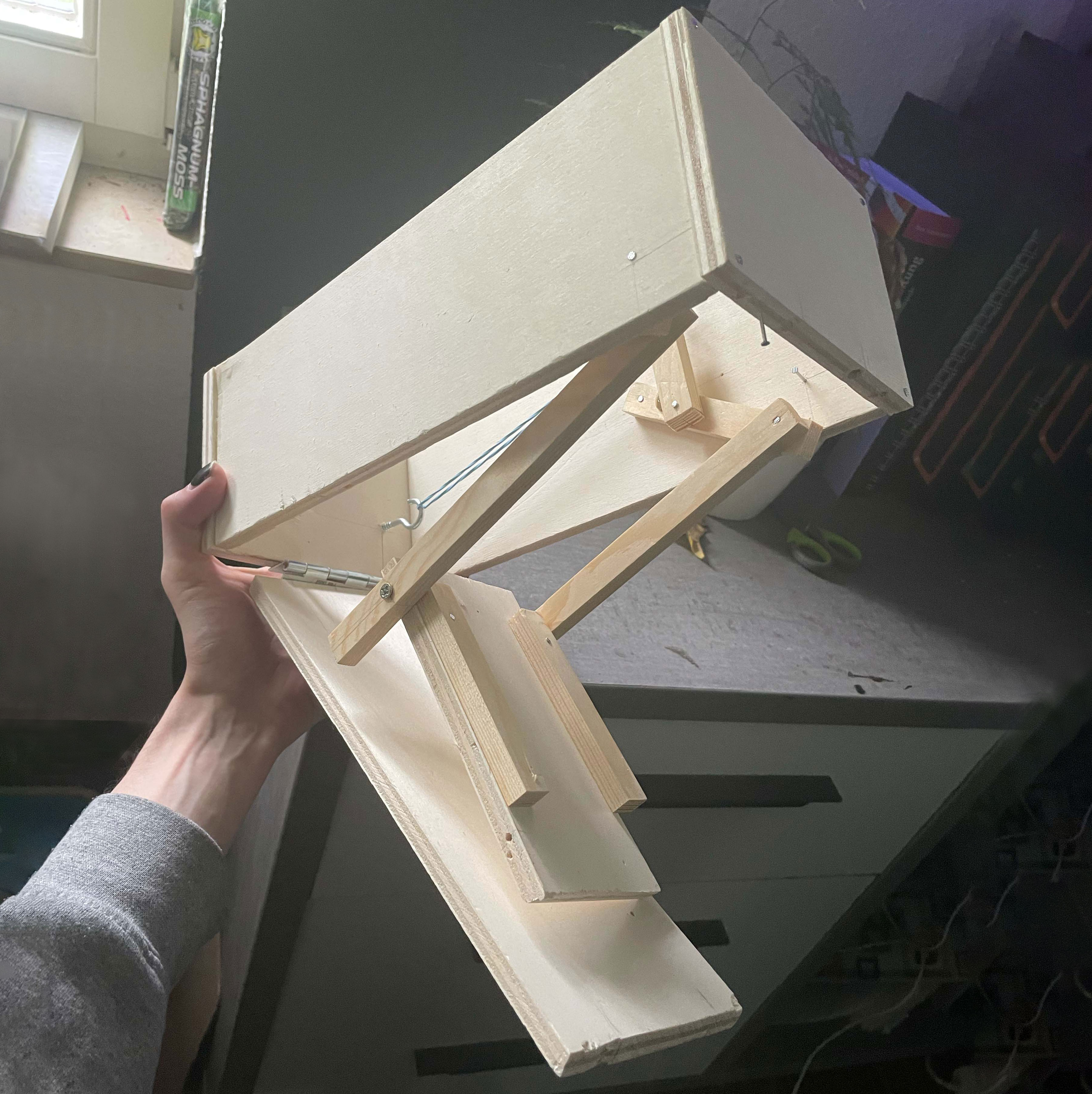Köln International School of Design – KISD
Integrated, interdisciplinary, international

The present publication tells the story of how the KISD joined up with FSB to run the “In and Out” project. Product Design students entered the debate with research, observation and experiment and in this way examined the relevance of Aicher’s work to the present day.
Remit
The processes of opening and closing doors involve spatial activities. We were intent in this half-year “In and Out” project on investigating situations surrounding entrances and exits and on endeavouring to arrive at new findings and devise fresh scenarios. We deliberated on a great many things: how will we open and close doors in future? Will we be able to think up any appealing and useful ideas and blueprints on the subject of negotiating entrances and exits or simply spending time near them?
Our product design remit was embedded within an ambitious and highly topical meta-framework: in the context of this project we also sought to mark the centenary of the birth of Otl Aicher by addressing ourselves to his design work, his writing and his thinking.
The project was a cooperative venture between the Köln International School of Design (KISD) and FSB within the framework of the “otl aicher 100 – Grasping with Hand and Mind” project. We prepared for the project by reading material by Otl Aicher along with an introduction and report by Kai Gehrmann and by paying a visit to FSB. After a guided tour of the company’s production facilities, we gained insights into the work Otl Aicher and FSB did together. So as to ensure we embarked on the subject in a well-informed manner, we kicked off with research work – partly inspired by Aicher’s own thorough scrutiny of his clients’ spheres of activity. We investigated the handles on doors used to access everything from houses to garages and cars. We then carried out empirical trials on accepted principles of closing and opening.
A number of these principles were put to effect in rudimentary models so they could be grasped in greater depth. The findings they and analyses of actual situations yielded formed the basis for product blueprints relating to the issue of opening and closing and of entrances and exits. It was possible to implement these ideas and blueprints both for the immediate present and for some point in the future.
Project review
The intention was that this very multifaceted project on an open topic that was thoroughly researched should culminate in blueprints for concrete products, and for a handle or two if at all possible, but we wondered whether it could actually work. It did work rather well in the end – and also threw up several handles, extrapolated from observations and analyses, from a great many practical tests on their uses and functions and, most agreeably, including some underpinned by Aicher’s deliberations on the subject of gripping. Exercises in “designing like Aicher” were not the objective, however. Otl Aicher was like someone from a different world to the international array of participating students, a man from the past, and there was a big question mark around whether his thoughts, methods and work would still be of interest in the eyes (and hands!) of today’s students. Particularly so considering that his designs and literary outpourings date back to a period up to half a century ago.
They became acquainted with his work from a variety of perspectives and sources in the course of the project. We were curious as to what they would find interesting. What would they adopt, adapt and apply as their individually formulated “In and Out” topic – and what would they steer clear of?
It was above all Aicher’s methodology, the meticulous way in which he investigated the objects he was to design, from which we derived inspiration in this project. With clients such as FSB, Bulthaup and BMW, he invariably strove to determine what it was they basically produced and how their products were used. He wrote books on the issue that such as Greifen und Griffe, Die Küche zum Kochen and kritik am auto are still topical today.
We conducted exhaustive research very much in this spirit on entrance situations, doors, windows, handles, and even cabinet and garage doors. Given that the acts of “opening” and “closing” have something to do with mechanics, we undertook an expedition into the world of mechanical closing systems during which we studied our own selection of opening principles and, by replicating them in models, were able to investigate them in greater depth and make them more readily comprehensible to others.
The most important part of the project involved drafting a product for a given situation we chose and investigated ourselves. A greater number of handles than envisaged were conceived, all with specific properties and trouble-shooting remits for which a solution was then found in the draft-design.
Some focused on the notion of improving the use made of doors and points of access, whilst others gave greater consideration to how well a handle was designed and to how user-friendly and pleasant to take hold of it was. The upshot was an extremely varied, multifaceted range of draft-designs, all of which were implemented as models, many of them 3D-printed.
One highlight of this project was the session at FSB, during which the students were afforded insights into how door handles are made.
The young designers were also provided with information on the company’s work with Otl Aicher, making this a most engaging excursion for them all in all. The two in-depth workshops held on campus in Cologne were outstanding for a quite different reason. The Corona lockdown, which had been the normal state of affairs in the recent academic past, had now been lifted. Students could now once again meet and directly find out what their colleagues were working on, engage in spontaneous discussion, be of mutual assistance and exchange findings and experiences.
Project results
Introduction by the Institute (TH Köln)
The concept of design has been refined over the past few decades. The spectrum of items that can be fashioned has become much broader and can no longer be confined to commonplace objects. Social structures, communication processes or services are likewise defined, determined and shaped by design.
The Köln International School of Design at the Cologne Institute of Science and Technology (KISD) offers its students scope for getting to know the full breadth and complexity of design in depth and for systematically harnessing same.
In the course of their studies, these budding designers acquire a practical and theoretical knowledge of design that qualifies them for present and future areas of action in the field.
The KISD has been providing its students with a unique project-driven environment of learning and research for over thirty years now, one that aims to play to students’ individual strengths. All courses of study at the KISD are geared along integrative, interdisciplinary and international lines.

















